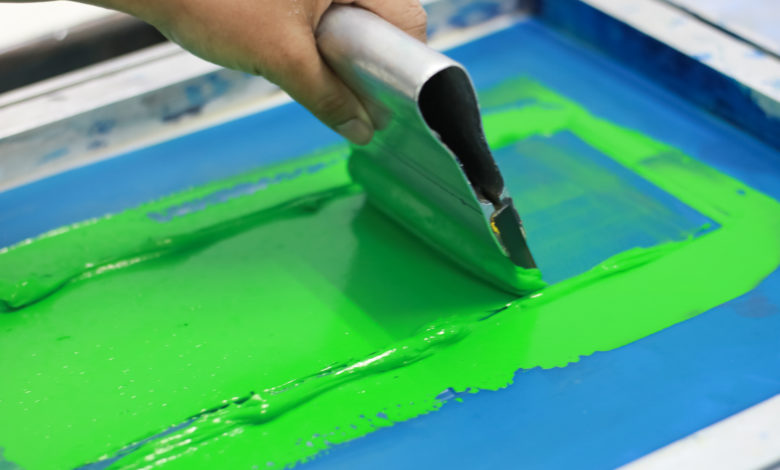
There are four areas where excess ink loss can rear its ugly head and add up to a lot of lost revenue. Most people think the reclaim process in screen printing starts at the washout booth, dip tank, or machine. In reality, the press is where the money pit starts.
Most reclaiming processes start like this: A printer finishes printing, and it is time to remove the squeegee and/or flood bar from the press. They then scrape the ink off these items, but they end up leaving a lot behind.
Then, they head over to the trash bucket, peel the tape loaded with ink off and roll it right into the bucket. This makes removing ink from the screen a lot less messy and a whole lot easier, but again lost ink adds up to more costs. I have seen it, you have seen it, and we have both done it.
The next way to lose even more excess ink is one that I have never understood and makes no logical sense to do. Whatever ink is left in the screen gets scraped right back into a perfectly clean, zero ink, image area. If you scrape the ink back into the image area, the lower the mesh count, the more ink you take to the washout booth, dip tank, or an automatic reclaim machine. I get a heap of troubling phone calls from people asking why there are ink stains in the image area. What you are seeing is not an ink stain; it is actually ink and thick ink at that.
Yet another waste area is if excess ink is not recaptured at the press and the screen moves to the final step of reclaim, be that a washout booth, dip tank, or machine. All the excess ink is just scraped off and placed in a bucket, with all the colors mixed together with no way of recapturing it. You also have to pay to get rid of it. So, in reality, it is excess ink you paid for twice with zero value. Plus, the particular time and effort that goes into this add to the costly outcome.
All inks have a yield factor. How many widgets can I get out of a gallon of ink? By applying the yield factor at the start in the ink room and only using the amount of ink that is needed at the press, you start to create a series of process controls which you can develop for any step of the entire printing process.
I’m sure you have process controls in place for exposure times, flash times, belt speeds, etc. Why not make them for the reclaim process? I know it takes time and money. There is no fuzzy math involved in this.
Let’s take a shop that reclaims 30 screens a day, for example. If you can recapture just one ounce of excess ink off each screen, the monetary return outweighs any labor costs. (Note: Ink is sold by weight.)
- 1 oz. per screen at 30 screens per day X 5 days in a week = 150 ounces
- If you take that number X 50 weeks = 7,500 ounces or 469 pounds of ink!
With whites coming in at 12-14 pounds per “gallon container” and most colors at 9-13 pounds, it comes to almost 35 gallons of waste ink per year. I will lowball the per-gallon cost at $50, for a savings of $1,750 per year!
Further, the added cost benefits that are free equal faster reclaim times, cleaner screens, and less reclaim products used in the process.



